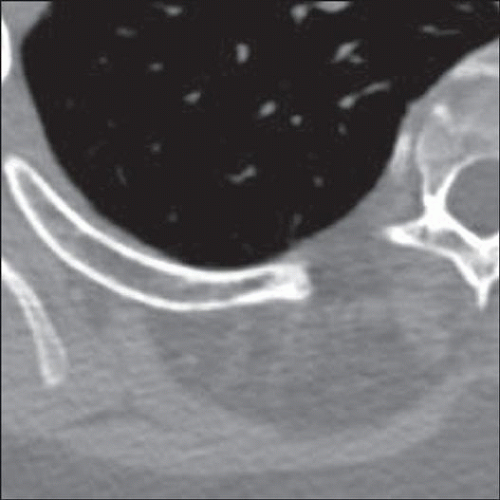Adipocytic Tumors
G. Petur Nielsen, MD
Andrew E. Rosenberg, MD
Key Facts
Terminology
Liposarcoma
Extremely rare malignant neoplasm with a phenotype that recapitulates fat
Lipoma
Benign neoplasm of mature adipocytes
Clinical Issues
Liposarcoma
Generally, behavior of tumor correlates with its histologic grade
Lipoma
Prognosis excellent, rarely recurs
Image Findings
Liposarcoma
May be either well delineated or poorly defined and aggressive in appearance
Lipoma
Intramedullary lipoma usually produces a well-defined lytic mass surrounded by a thin rim of sclerosis
Microscopic Pathology
Liposarcoma
Different types of liposarcoma arising in bone have histologic features similar to their soft tissue counterparts
Lipoma
Consists of lobules of mature-appearing white adipocytes that may replace marrow and encase preexisting bony trabeculae
TERMINOLOGY
Abbreviations
Liposarcoma: Well-differentiated liposarcoma (WDL), myxoid/round cell liposarcoma (MLPSA)
Synonyms
Lipoma: Intramedullary lipoma, intracortical lipoma, ossifying lipoma, parosteal lipoma
Definitions
Liposarcoma
Extremely rare primary malignant neoplasm of bone with a phenotype that recapitulates fat
Lipoma
Benign neoplasm of mature adipocytes that, when involving bone may arise within the bone, cortex, or on its surface (parosteal)
ETIOLOGY/PATHOGENESIS
Neoplasm
Etiology is unknown for lipoma and liposarcoma
No predisposing factors are known
CLINICAL ISSUES
Epidemiology
Incidence
Liposarcoma of bone
Very rare
Most cases are in the form of single case reports
Lipoma of bone
Intraosseous lipomas are uncommon and account for < 0.1% of primary bone tumors
Age
Liposarcoma
Occurs in all age groups
Majority of patients are adults
Lipoma
Intraosseous lipomas occur over a wide age range, 2nd-8th decades; most patients are approximately 40 years old at time of diagnosis
Parosteal lipoma usually develops during adulthood; most patients in 5th-6th decades of life at time of diagnosis
Gender
Liposarcoma
Slightly more common in males
Lipoma
Intraosseous lipoma affects males more frequently than females
Parosteal lipoma also has slight male predominance
Site
Liposarcoma
Usually develops in long tubular bones, most commonly tibia and femur
Can arise in diaphysis, metaphysis, or epiphysis
Lipoma
Vast majority of intraosseous lipomas are intramedullary and arise in metaphyseal regions of long tubular bones
Frequently arise in femur, tibia, fibula, and calcaneus
Have also been described in the pelvis, vertebrae, sacrum, skull, mandible, maxilla, and ribs
Rare cases are intracortical in origin
Parosteal lipoma generally develop on diaphyseal surface of long tubular bones, including femur, humerus, and tibia
Presentation
Prognosis
Liposarcoma
Generally, behavior of tumor correlates with its histologic grade
Well-differentiated liposarcoma has best prognosis
Pleomorphic liposarcoma has worst prognosis
Lipoma
Excellent
Rarely recurs
Stay updated, free articles. Join our Telegram channel

Full access? Get Clinical Tree




